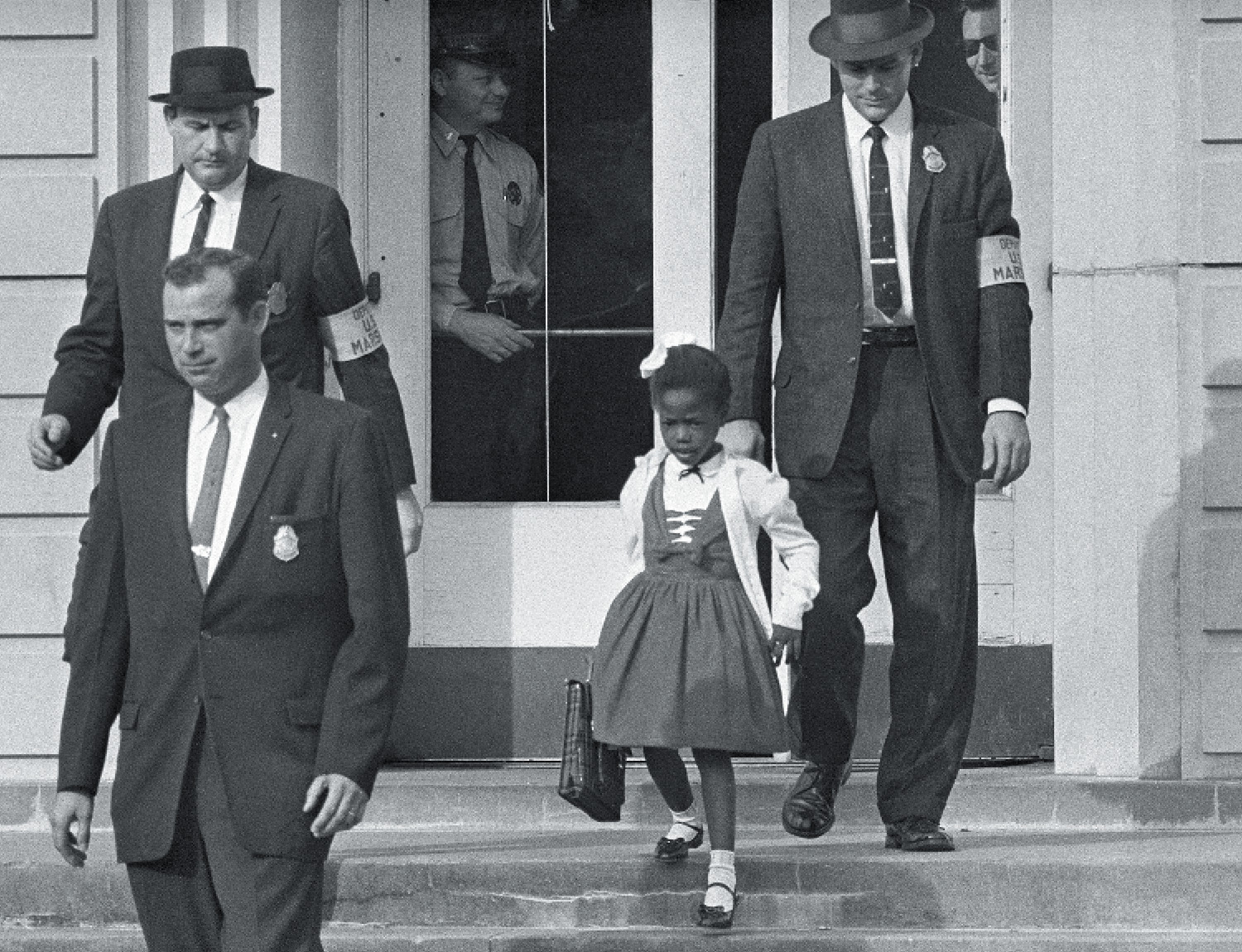Ruby Bridges Hall

Hillary and Chelsea
Hillary
Ruby Bridges was only six years old in 1960 when she was escorted by federal marshals past a crowd of angry, hate-filled white protesters into William Frantz Elementary School in New Orleans. She was the first ever—and, for the next year, the only—black student.
Ruby was born in Tylertown, Mississippi, the same year that the Supreme Court ruled in Brown v. the Board of Education that racially segregated schools were unconstitutional. In 1958, her family moved to New Orleans, where she attended a segregated school until the district was ordered by a federal court to integrate. Ruby was one of only six students to pass the “test” the district came up with to prevent black students from entering white schools. Ruby’s mother encouraged her to take advantage of the opportunities that would be afforded her at the previously all-white William Frantz Elementary. Even though her father warned her that it would be daunting, Ruby showed up at her new school on a warm November day after having been forced to miss the first month of school because of the state legislature’s efforts to keep schools segregated.
“Racism is a grown-up disease and we must stop using our children to spread it.”
—RUBY BRIDGES HALL
The picture so common in modern history books is in black-and-white, making it seem much older than a mere six decades ago: A small girl in a neat dress, carrying a book bag, her head held high, descends the steps of her new school surrounded by grown men in suits. Out of the camera’s eye is a jeering crowd of white adults and children protesters, carrying signs reading “We Don’t Want to Integrate” and “All I Want for Christmas Is a Clean White School.” Instead of learning with the other students, Ruby spent most of that first day in the principal’s office with her mother, prevented from getting to her classroom by the chaos in the halls. Norman Rockwell later depicted the moment in his painting The Problem We All Live With, considered an iconic image of the civil rights movement.
The rest of that first year wasn’t much easier. Protests against integration continued across the city. Ruby’s father eventually lost his job. Angry segregationists repeatedly showed up at Ruby’s school, determined to drive her away; they never succeeded. Her mother was turned away from local stores, and her grandparents lost their land. Ruby remained determined to get the education she deserved. Only one teacher was willing to teach Ruby: Barbara Henry, who had moved from Boston to the South in hopes of helping to integrate the schools. They studied together, alone in a classroom.
Chelsea
Eventually, the protests died down. Other black students enrolled in William Frantz Elementary over the following years. Ruby went on to graduate from a desegregated high school in the area. She worked as a travel agent and consistently advocated for racial equality in and out of the classroom. She stayed in touch with Dr. Robert Coles, a Harvard child psychiatrist who had begun counseling her in 1960. Inspired by their conversations, he published a children’s book, The Story of Ruby Bridges, in 1995. Four years later, Ruby published her memoir, Through My Eyes, and, also in 1999, she started the Ruby Bridges Foundation, which works to eliminate racism in schools through community service. She and her husband still live in New Orleans, where they raised their four children, and where a statue of Ruby stands outside of William Frantz Elementary.
I first learned about Ruby Bridges at Horace Mann, the junior high school I attended in Little Rock. Horace Mann had previously been the all-black high school that Ernest Green and other members of the courageous Little Rock Nine attended before integrating Little Rock Central High School in 1957. Our teachers took the school’s legacy seriously, and taught us about desegregation in Arkansas and across the country. What we didn’t learn then—and I wish we had—was how segregated our schools still are, the result of many racist legacies, including white flight and redlining, a form of housing discrimination. Solving this injustice requires dedicated research and resources. It will take policies and action at the federal and local level to address everything from enrollment, curriculum, and discipline in schools to housing and transportation. Just as important, as many have pointed out, it requires the political will from our elected leaders to create good schools that are truly integrated.
In 2001, my father awarded Ruby the Presidential Citizens Medal. Her warmth and youth, even then (she was in her forties) were a reminder of just how much we asked of her at such a young age—to take a stand not just for her own right to an education but for the rights of millions of black Americans, with her head held high. Decades later, she remains a believer in the power of love and one person’s ability to make a positive difference. “I now know that experience comes to us for a purpose,” she has said, “and if we follow the guidance of the spirit within us, we will probably find that the purpose is a good one.”